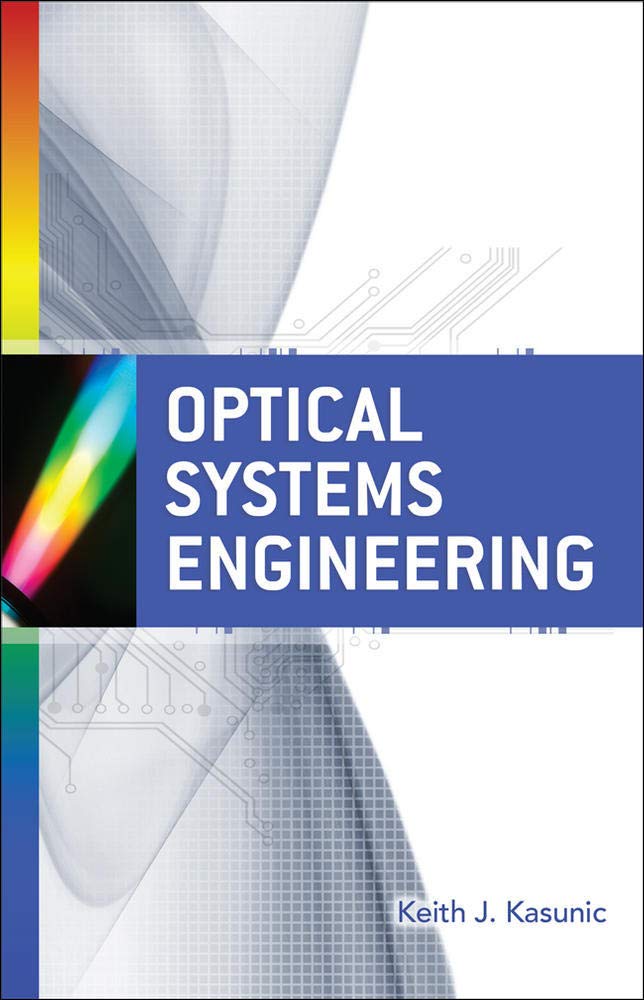ngongoctuan.dung
New member

[Đừng Bỏ Lỡ Sản Phẩm Hot Nhất - Số Lượng Có Hạn!]: (https://shorten.asia/axnsZcSj)
** Kỹ thuật hệ thống quang học: Một bài viết viết lại cho tiếp thị liên kết **
** Hashtags: ** #OpticalSystemSengineering #optics #Engineering
Kỹ thuật hệ thống quang học là nhánh của kỹ thuật liên quan đến thiết kế, phân tích và thử nghiệm các hệ thống quang học.Các hệ thống quang học được sử dụng trong một loạt các ứng dụng, bao gồm hình ảnh, truyền thông và cảm biến.
Bài viết này cung cấp một cái nhìn tổng quan ngắn gọn về kỹ thuật hệ thống quang học, bao gồm các loại hệ thống quang học khác nhau, quy trình thiết kế và phương pháp thử nghiệm.
** Các loại hệ thống quang học **
Các hệ thống quang học có thể được phân loại thành hai loại chính: thụ động và hoạt động.Các hệ thống quang thụ động không yêu cầu bất kỳ nguồn năng lượng bên ngoài nào hoạt động.Chúng bao gồm gương, ống kính và lăng kính.Mặt khác, các hệ thống quang học hoạt động yêu cầu một nguồn năng lượng bên ngoài để vận hành.Chúng bao gồm laser, điốt phát sáng (đèn LED) và bộ quang điện.
**Quá trình thiết kế**
Quá trình thiết kế cho một hệ thống quang học bắt đầu với đặc điểm kỹ thuật của hiệu suất mong muốn.Điều này bao gồm lĩnh vực xem, độ phân giải và độ nhạy mong muốn.Khi các yêu cầu hiệu suất đã được chỉ định, nhà thiết kế có thể bắt đầu chọn các thành phần quang học thích hợp.
Quá trình thiết kế là lặp đi lặp lại, và nó thường liên quan đến một số mô phỏng và thí nghiệm.Mục tiêu của quá trình thiết kế là tạo ra một hệ thống quang học đáp ứng các yêu cầu hiệu suất mong muốn trong khi có hiệu quả về chi phí và có thể sản xuất được.
** Phương pháp kiểm tra **
Khi một hệ thống quang học đã được thiết kế, nó phải được kiểm tra để đảm bảo rằng nó đáp ứng các yêu cầu hiệu suất mong muốn.Các phương pháp thử nghiệm được sử dụng sẽ phụ thuộc vào loại hệ thống quang cụ thể.
Một số phương pháp thử nghiệm phổ biến cho các hệ thống quang học bao gồm:
*** Các phép đo công suất quang ** Để đo cường độ của đầu ra ánh sáng bằng hệ thống
*** Các phép đo mặt sóng ** Để đo hình dạng của mặt sóng của đầu ra ánh sáng bằng hệ thống
*** Các phép đo chất lượng hình ảnh ** Để đo độ phân giải và độ tương phản của hình ảnh do hệ thống tạo ra
**Phần kết luận**
Kỹ thuật hệ thống quang học là một lĩnh vực phức tạp và đầy thách thức, nhưng nó cũng là một lĩnh vực rất bổ ích.Các hệ thống quang học được sử dụng trong một loạt các ứng dụng và chúng đóng một vai trò quan trọng trong thế giới hiện đại của chúng ta.
Nếu bạn quan tâm đến việc tìm hiểu thêm về Kỹ thuật hệ thống quang học, có một số tài nguyên có sẵn trực tuyến và trong các thư viện.Bạn cũng có thể tìm thấy các khóa học về Kỹ thuật hệ thống quang học tại nhiều trường đại học và cao đẳng.
=======================================
[Đừng Bỏ Lỡ Sản Phẩm Hot Nhất - Số Lượng Có Hạn!]: (https://shorten.asia/axnsZcSj)
=======================================
**Optical Systems Engineering: A Rewritten Article for Affiliate Marketing**
**Hashtags:** #OpticalSystemSengineering #optics #Engineering
Optical systems engineering is the branch of engineering that deals with the design, analysis, and testing of optical systems. Optical systems are used in a wide variety of applications, including imaging, communications, and sensing.
This article provides a brief overview of optical systems engineering, including the different types of optical systems, the design process, and the testing methods.
**Types of Optical Systems**
Optical systems can be classified into two main types: passive and active. Passive optical systems do not require any external power source to operate. They include mirrors, lenses, and prisms. Active optical systems, on the other hand, do require an external power source to operate. They include lasers, light-emitting diodes (LEDs), and photodetectors.
**Design Process**
The design process for an optical system begins with the specification of the desired performance. This includes the desired field of view, resolution, and sensitivity. Once the performance requirements have been specified, the designer can begin to select the appropriate optical components.
The design process is iterative, and it often involves a number of simulations and experiments. The goal of the design process is to create an optical system that meets the desired performance requirements while being cost-effective and manufacturable.
**Testing Methods**
Once an optical system has been designed, it must be tested to ensure that it meets the desired performance requirements. The testing methods that are used will depend on the specific type of optical system.
Some of the common testing methods for optical systems include:
* **Optical power measurements** to measure the intensity of the light output by the system
* **Wavefront measurements** to measure the shape of the wavefront of the light output by the system
* **Image quality measurements** to measure the resolution and contrast of the images produced by the system
**Conclusion**
Optical systems engineering is a complex and challenging field, but it is also a very rewarding one. Optical systems are used in a wide variety of applications, and they play an important role in our modern world.
If you are interested in learning more about optical systems engineering, there are a number of resources available online and in libraries. You can also find courses on optical systems engineering at many universities and colleges.
=======================================
[Bạn Sẽ Rất Tiếc Nếu Bỏ Lỡ - Đặt Mua Ngay Thôi!]: (https://shorten.asia/axnsZcSj)






